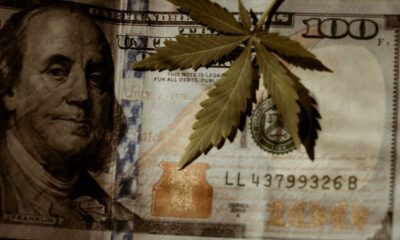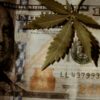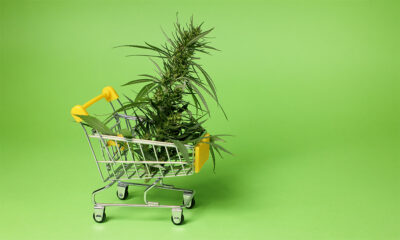
Economics
OKC Connection: Where Does America’s Illegal Cannabis Come From?
For years a West Coast thing, drug agents now claim underground marijuana production has shifted to the Great Plains.
Just as it was since Richard Nixon and the dawn of the War on Drugs, almost a decade into the United States’ experiment with marijuana legalization, cannabis remains America’s favorite illicit drug. This is because—according to police, politicians, and most everyone in the struggling, overtaxed and underperforming legal cannabis industry—the majority of the cannabis consumed in the country is still “illegal.”
Most of what the roughly 45 million Americans who used cannabis in the last year, as per the Centers for Disease Control and Prevention, used cannabis produced and sold outside of the legal marketplace: away from taxes, away from regulators, and—to hear law enforcement tell it—in the clutches of dangerous multinational criminal organizations (whom the police never can seem to catch, despite bust after bust after bust!).
The remarkably resilient status quo here begs a question: These days, where is the illegal weed coming from? And should you care?
Mistrust the Police
For some, marijuana legalization meant the end of the underground cannabis trade (although in fairness, legalization advocates rarely—if ever—said this; what they said was that legalization would create a competing regulated market). In retrospect, this was an ambitious but unrealistic over-promise. Halting alcohol prohibition didn’t end the mob any more than it discouraged bootleggers from evading taxes and the law.
Due to a combination of over-taxation and over-regulation, bootleg cannabis is often simply cheaper and easier to access. Though some $17.5 billion worth of legal weed was sold in the United States in 2020, as per Forbes, the illicit market is anywhere from three to eight times larger, depending on whose estimate you choose to believe. (And, if you ask some connoisseurs, because some legacy growers who have been producing top-end cannabis for decades have been shut out of the legal market, illicit cannabis may in some cases be better.)
But to hear police tell it, every state is the country’s leading trap state, as long as it’s their state (and thus their job to do something about it, a task that requires an ever-growing portion of your tax dollars).
Sooner Kush
Ever since Oklahoma legalized medical marijuana and opened what’s considered the most laissez-faire cannabis marketplace in America—it’s very easy to obtain a medical recommendation, and only slightly more difficult to get a license to cultivate and sell—the state Bureau of Narcotics has claimed that the Sooner State has become the nation’s top trap state, with as much as 60 percent of that pot destined for the illicit market, mostly by organized crime.
“You’ve got the cartel; you’ve got the Chinese drug ring; you’ve got the biker gangs,” as Oklahoma state Rep. Josh West told a Tulsa newspaper. “Pretty much every criminal organization is operating in the state of Oklahoma right now.”
That sounds scary—but as usual, hard facts are hard to come by. (Oklahoma newspapers are full of reports of neighbors complaining about “Chinese-speaking newcomers” growing pot; as POLITICO and other media reported, at least some of these are simply Americans with Chinese last names getting started in a new industry.)
But according to cannabis industry advocates and players, there’s reason to believe Oklahoma cannabis is absolutely reaching the growing demand in East Coast markets once supplied by legacy West Coast states like California and Oregon. For one, prices on both the legal and illegal markets are dropping in those states—signs that there’s competition coming from somewhere. And logic dictates that a state physically closer to high-demand markets may be better positioned to supply those markets.
“It’s hard to get any real facts about the Oklahoma thing, but I definitely know we’re getting stuff [in New York] from Oklahoma,” said Allan Gandelman, the co-founder of a New York state organic hemp farm and president of the New York State Cannabis Growers and Processors Association. (New York, though a very established cannabis marketplace, traditionally has been an importing state, and so may be a decent bellwether of trap patterns nationwide.)
“For people shipping out of state, the northeast is a lot closer to Oklahoma than it is to California,” he added. “That’s what happens when you have an almost totally unregulated market.”
But figuring out which state supplies the underground market also requires identifying the underground market. According to NORML, the states with the highest per-capita cannabis consumption are Oregon, Colorado, Vermont, Maine, and Alaska.
All of those states allow adult-use cannabis (though Vermont does not have retail dispensaries).
And both Oregon and Colorado have been identified by law enforcement as havens for illegal trafficking—again, due to the fact that legalization makes it relatively easy (or at least legal) to grow weed there. Oregon also has lower labor and land costs than California—so much so that it’s rumored Oregon cannabis floats south across the border to enter the California legal market.
Though cannabis consumers are everywhere, the country’s most sophisticated—and thirstiest—consumer marketplace is its oldest marketplace. And that’s a very familiar usual suspect.
According to state lawmakers, California’s illicit cannabis market is five times bigger than the legal market. One simple cause is that adult-use legalization made several thousand existing medical-marijuana retailers illegal, in part because of new permit fees and taxes, but also because of new zoning and licensing restrictions. But the effect is that there’s significant domestic demand for cannabis in a state that also produces it.
All that demand had to go somewhere—so it went underground. Note that the nation’s biggest illicit pot busts by volume all seem to happen in California. Over the summer, Los Angeles Sheriff Alex Villanueva claimed his deputies had busted what he described as a billion-dollar cannabis grow out in the Mojave Desert. In October, drug agents in the San Francisco Bay Area reported what they described as that region’s biggest-ever bust. Where is all this weed going? Some of it is going out of state, surely. But some of it is also surely supplying the domestic demand that the legal market can’t meet.
Demand is also related in part to branding. California has decades of cultural and marketing power behind it; the same can’t be said (yet) for Oklahoma Kush (though consumer choice is also dictating by price points). At high-end cannabis speakeasies in New York City, shelves are stocked with jars and bags bearing names of familiar West Coast brands—and if the cannabis inside is an imitator, it’s a talented impersonator.
But can this really be known—and does it really matter? Without quantification, the exact origin of the U.S.’s off-market weed can’t ever be “known” in the way the market for wine grapes and other commodities is “known.” And until legal cannabis can reliably compete with illegal cannabis on price and availability, there will always be an appetite for trap cannabis—no matter where it comes from.

























